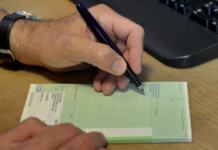The recent research scandals out of the University of Minnesota’s Department of Psychiatry may be alarming, but they are not new. Back in the 1990s, when the university was working its way towards a crippling probation by the National Institutes of Health (for yet another episode of misconduct, this time in the Department of Surgery), the Department of Psychiatry hosted two spectacular cases of research wrongdoing, both of which resulted in faculty members being disqualified from conducting research by the FDA.
The first was the case of Dr. Barry Garfinkel, the head of Child and Adolescent Psychiatry. Garfinkel was the principal investigator for a $250,000 Ciba-Geigy study of Anafranil, an antidepressant, to determine if the drug was effective for obsessive-compulsive disorder in adolescents. Unfortunately, Garfinkel was not the most scrupulous researcher. According to newspaper reports, Garfinkel falsified data, submitted forms for psychiatric evaluations that didn’t actually take place, and instructed his research assistant to give therapy to subjects even though she had no medical training. For this Garfinkel wound up in federal court, where he was sentenced to six months in federal prison, six months of home detention, 400 hours of community service, and was fined $214,000.
Sound familiar? It gets better. Even more impressive than Garfinkel’s fraud were the actions taken by University of Minnesota administrators to protect him. After the whistleblower that alerted the university was fired, the Dean of the Medical School, David Brown, made a secret agreement with Garfinkel to keep the university investigation hidden for nearly four years. The university spent nearly $180,000 in legal fees to maintain that secrecy. When the FDA got involved, the university refused to share its findings until the FDA had them subpoenaed. The university later claimed in a press release that it had cooperated with the FDA – a claim that an FDA official told the Star Tribune he found “offensive.” He said, “This is not what I would characterize as cooperation.”
The University of Minnesota was still under fire for covering up the Garfinkel fraud in 1993 when yet another psychiatric scandal emerged. Dr. James Halikas, a tenured professor in the Department of Psychiatry, had gotten permission from the FDA to test a drug called gamma hydroxybutyrate, or GHB, for opiate addiction. He began by recruiting uneducated Hmong refugees who did not speak English. The Hmong patients had become addicted to opium in Laos, where the drug is often used as a painkiller. Although they had come to the university to get methadone maintenance treatment, the patients had discovered that the methadone clinic was closed to them. Why? Because Halikas had decided that Southeast Asians were taking up too many spots at the clinic. He was only admitting non-Asians.
According to the FDA, Halikas enrolled ten of those Hmong patients in his GHB study. Although they complained bitterly that GHB didn’t work and repeatedly asked for methadone, it was not until a formal complaint was lodged by another faculty member, Dr. Sheila Specker, that an investigation was triggered. It soon became clear that Halikas had never actually obtained informed consent from his subjects. In fact, it is not even clear that the subjects even knew they were in a research study. (This was not because Halikas didn’t know better; he was a member of the university’s Institutional Review Board.) According to a later investigation by the FDA, several of the subjects were severely depressed and at risk of suicide, and should have never been enrolled in the study, even if they had given their consent. Although Halikas told the Star Tribune that GHB is “so mild that it has been used in Europe as a children’s sedative,” it is in fact a central nervous system depressant that is sometimes used as a date rape drug. At the time of the study it had been linked to seizures and coma. The FDA found that Halikas had dispensed it in dangerously high doses.
According to the Star Tribune, although the university investigated the complaint about Halikas, it did not inform state licensing officials who have jurisdiction over the drug program. Nor did it bar Halikas from conducting research. That did not happen until 2000, when the FDA formally “disqualified” him as a clinical researcher.
By that point, of course, the current Seroquel scandals at Minnesota were getting started. The new chair of the Department of Psychiatry, Charles Schulz, was working on the “smoke-and-mirrors” study of Seroquel that would get him into trouble later, when internal AstraZeneca documents were unsealed in litigation. And a within another few years, his colleague, Stephen Olson, was recruiting subjects into the CAFÉ study of Seroquel, which resulted in a grisly death for at least one subject, Dan Markingson.
Misconduct this egregious happens only because university officials make it possible. Over a twenty year period, University of Minnesota administrators have done their best to protect the faculty members at fault, punish the whistleblowers, and above all, keep the wrongdoing secret. And unless that changes, Minnesotans can look forward to more fraud, more deception, and more injuries and deaths.
Acknowledgement: most of this post first appeared on Fear and Loathing in Bioethics.















” …actions taken … to protect him.”
” …done their best to protect the faculty members at fault, punish the whistleblowers, and above all, keep the wrongdoing secret.”
That’s what I call the living “double standard”: it’s okay for us, but not you.
People seem to pick and choose who is privileged and favored while others are chosen as the “fall guy” – ruthlessly “nailed to a cross”. The poor suffering bastard is then forced to suffer endless accusations, if the convicted one DARES to defend themselves.
Injustice!
Worst is when they start DEMANDING “peace”.
I’ve grown to understand the values – not in Peace, but in War.
Report comment
Dr. Elliot,
Thanks for your interesting posts. it is important on MIA that the readers learn about academia whistle blowers, to my mind because it is so easy to claim the entire field of research in psychiatry worthless and deprived of morals.
Does one should conclude that whistleblowers protection has been offered by law in the USA since the end of your civil war and regularly improved but only for those whistle blowers working outside of Academia?
Whistleblowers all over the world, no matter the field of offenses- so to speak, are always taking the risks of whistling with no effect other than suffering themselves inconveniences from a bad name (envious, incompetent) to being fired.
The ostrich attitude is something almost universal-seems to me.
An other way to look at it is Montesquieu ‘s thinking about the certainty of the punishment for any misconduct being more important than the severity of the penalty who applies in crime prevention.In that case, I wonder what do you make about too easy online publishing which can stay forever on the internet and of the fact that one can put oneself out of reach of scientific misconduct regulations by running an independant – non profit organization?
For example:
“Evidence of Photo Manipulation in a Delusional Parasitosis Paper.” Shelomi M.
University of California, Davis, Department of Entomology,
” In 2004, an article in the Journal of the New York Entomological Society claimed that individuals with Delusory Parasitosis actually suffer from collembola infestations. The article has been critiqued for poor methodology and results that contradict all knowledge about collembolans. Less easily accounted for has been a figure in the article purporting to show a collembolan in a skin scraping. The image appears to have been altered using photo manipulation software to an unacceptable degree, and this paper demonstrates that to be the case. The altered figure represents creation of nonexistent data, a form of scientific misconduct. Whether the deception is deliberate or a product of an otherwise well-meaning author ignorant of the limits of acceptable image manipulation is unknown, but the result is peer-reviewed support for an impossible conclusion that complicates patient treatment. In the current era of computers, even regional entomology journals must have detailed standards for what kind of images and image manipulations are acceptable for publication.”
Report comment